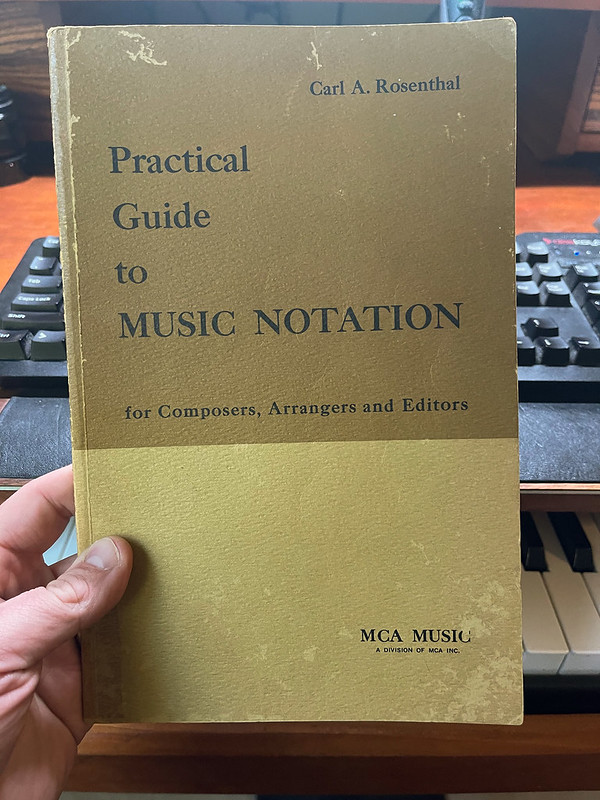John Ruggero wrote: ↑19 Oct 2023, 13:17
Arnstein was also a stem-down-on-the-middle-line-only guy. However, this rule may now be in flux.
I guess I don't see any musical reason for this rule to even be in flux, when it seems to have been "settled law" and applied fairly consistently for 50+ years now. "It looks prettier" really shouldn't take precedence over the benefit of reliability for the reader/sightreader of always having it stems-down.
When one thinks about it, really the entire evolution of music notation has been about adapting to serve the changing needs of the musicians. Take neumatic notation for example. It’s great for reminding a cantor of a monophonic melody (which they already have memorized anyway), but terrible at conveying rhythmic information. With the advent of polyphony, rhythmic precision obviously became much more important, so neumatic notation was gradually phased out in favor of our current system, which can more clearly and accurately convey rhythms.
Look at figured bass. It’s great at describing the basic functional harmonic structures of the Baroque, Classical, and early Romantic eras, less useful at late Romantic, and often not useful at all in Modern. Rimsky-Korsakov even wrote in 1886 in the forward to his
Practical Manual of Harmony about the “now obsolete figured bass.” As it became less helpful for musicians, other methods of notation evolved, such as chord symbols, set notation, and other means of notating theoretical structures.
With the development of recording technology, sightreading took on a new importance. Mistakes could now be permanent. In a studio situation, mistakes could be very expensive if another take is required. While there was some limited consensus, in the 19th and early 20th centuries you can still find all sorts of note groupings that look strange to our modern eyes. By the mid-20th century most of these had standardized into our current system, at least for “traditional” notation, all for the benefit of the reader/sightreader. Professional musicians do not read simply from left to right, but instead process rhythms in familiar “chunks” of information. Modern note grouping and beaming rules help facilitate this.
From what I can tell, the rule about an unbeamed note on the middle line always being stems-down seemed to solidify in the 1950-60s, which makes sense as that was the heyday of the studio orchestra era. Having consistency with this helps the musician stay oriented on the staff so they are free to focus on other elements. A stems-up note here probably isn’t going to mess me up anymore than a dotted quarter on beat 2 in 4/4 would, but taken in the context of consistency for the reader, it seems like a backwards evolutionary move to allow this, when this has more or less been standardized for 50 years (except for Gould) and there is a clear benefit for the reader/sightreader. I guess it's the evolutionary backwards-ness of allowing stems-up here that makes it look so strange to me in modern notation.






